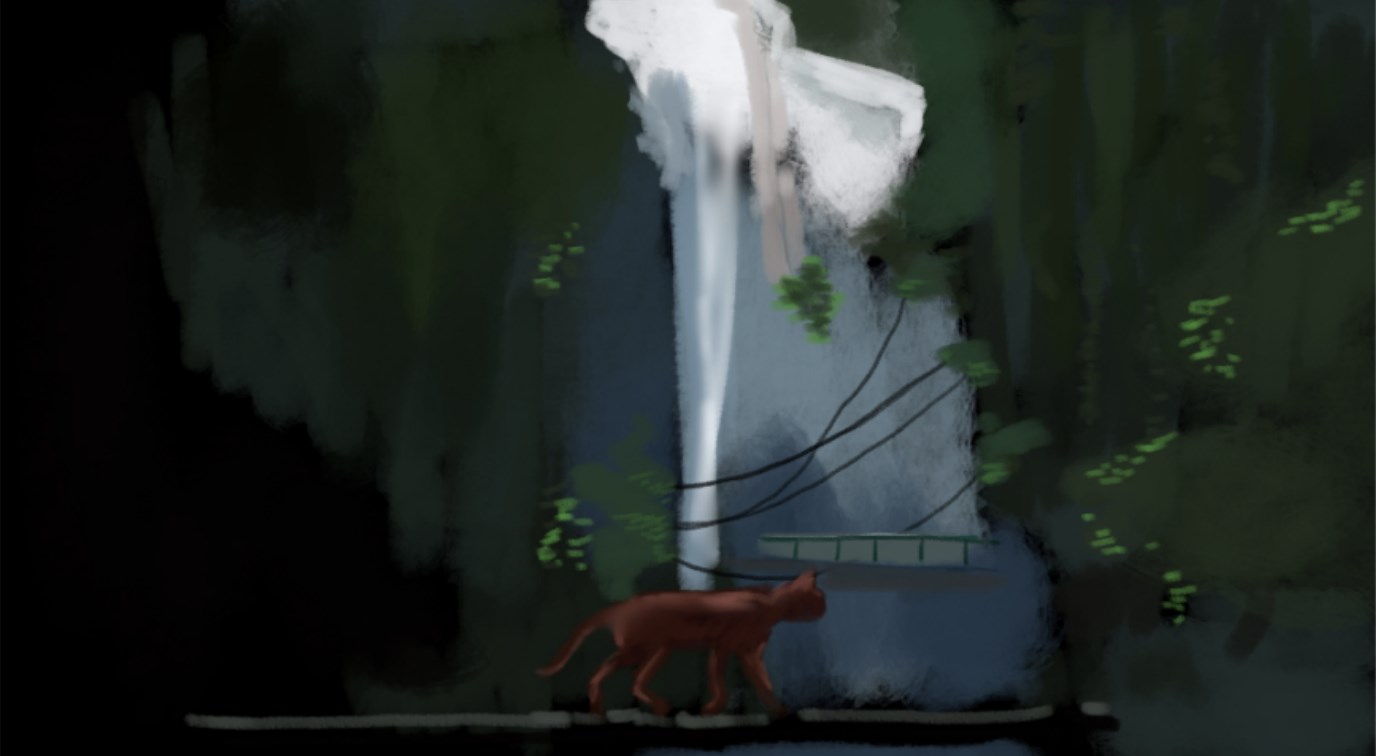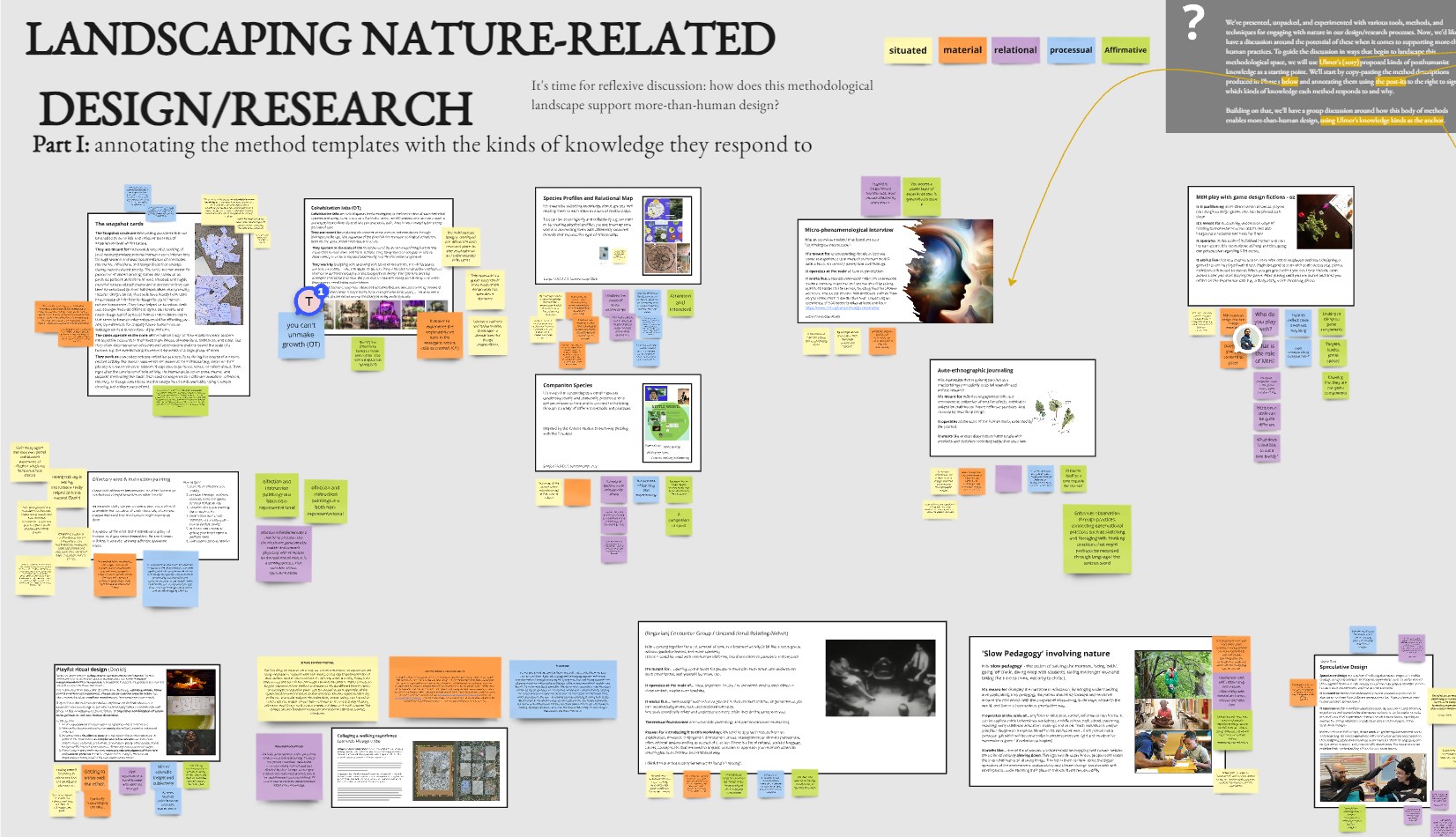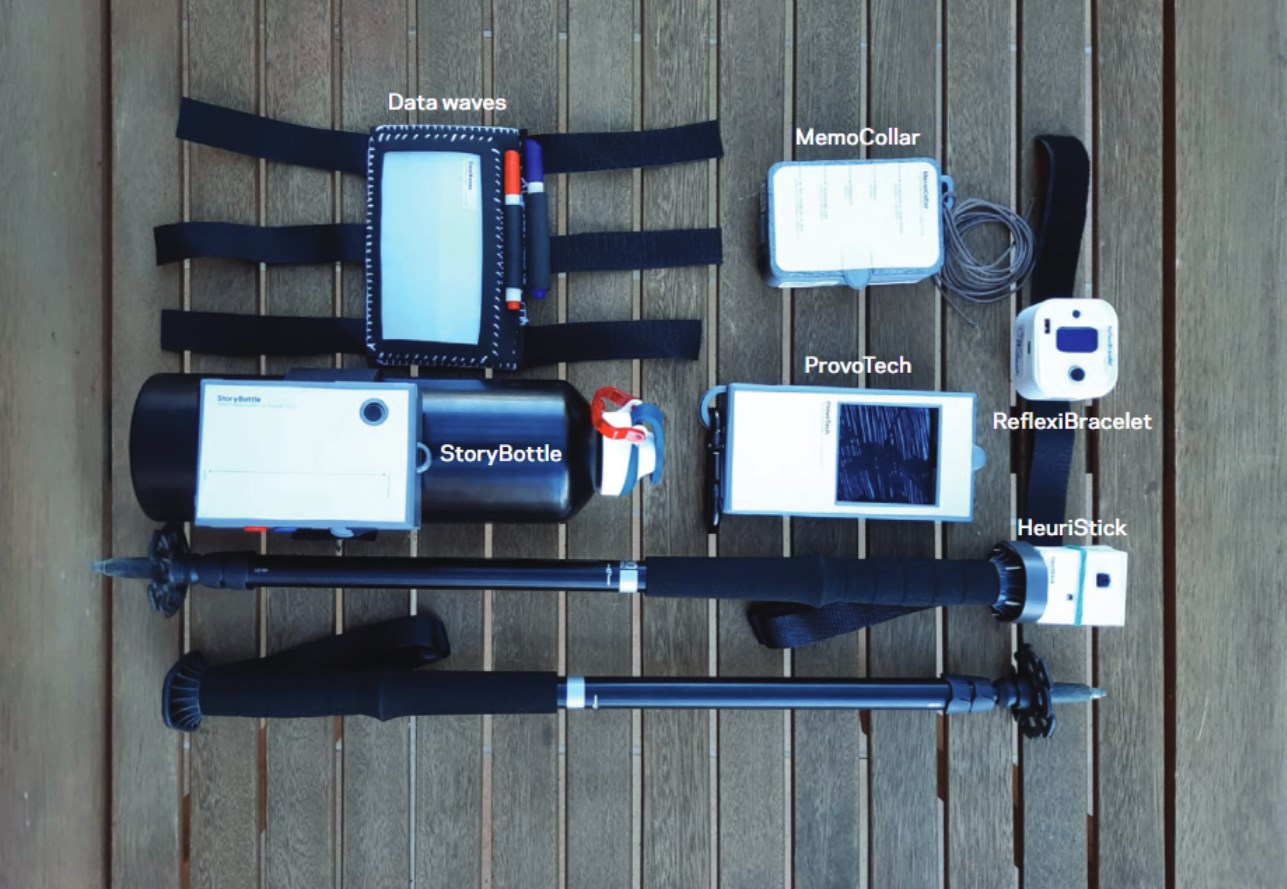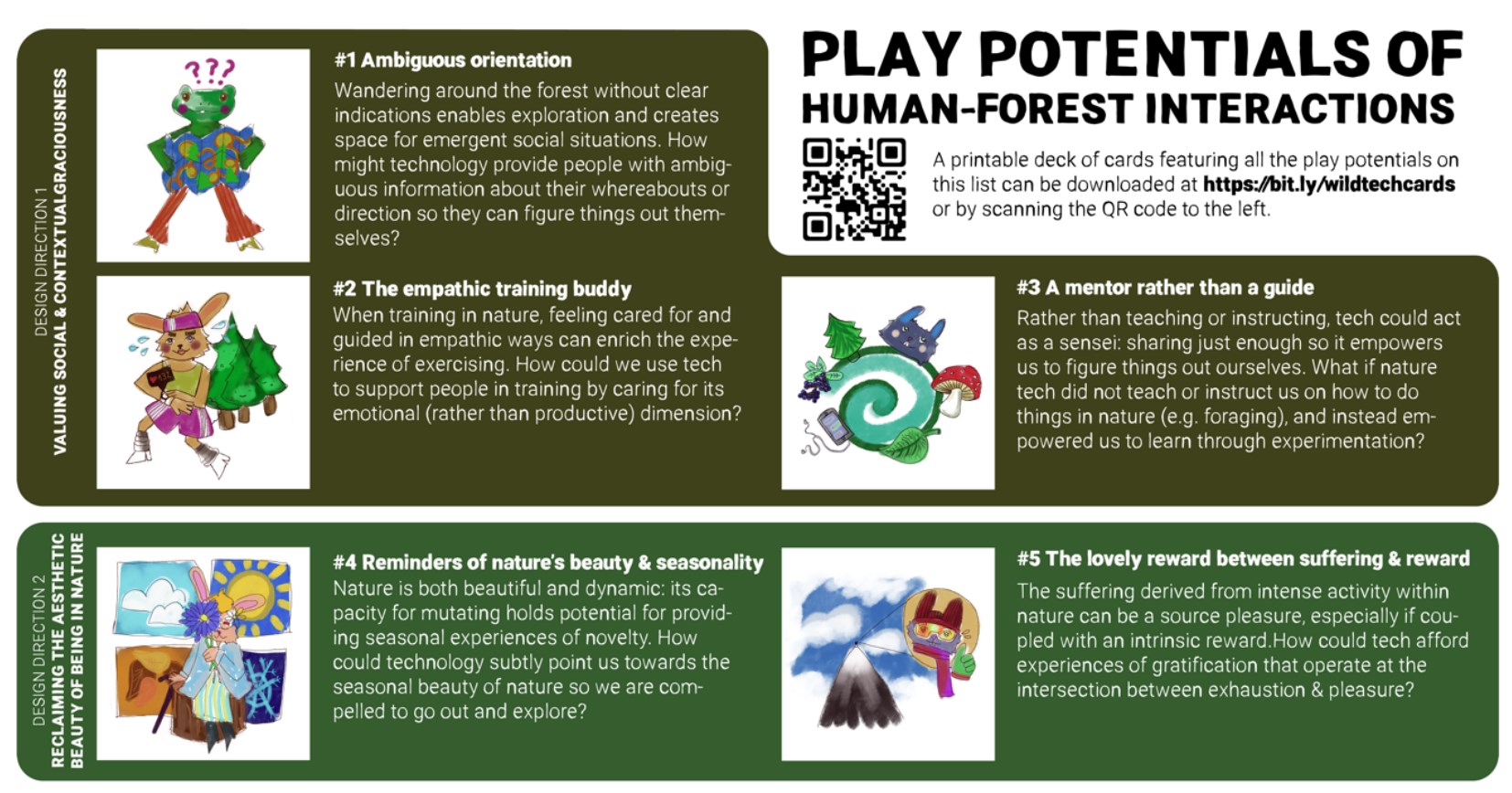Abstract
We are witnessing a shift towards a more-than-human (MtH) paradigm in HCI, recognizing non-human beings as interconnected in our existence, from daily life to design. While exciting MtH design works have emerged, they often rely on abstract concepts (e.g., decentering) that remain open to interpretation, leaving practical nuances underexplored. To address this, we adopted a bottom-up Research through Design approach, a Reflexive Design Studio: as a design team, we created and reflected on conceptual designs using the mushroom basket as a metaphor to explore human–non-human relationalities. From these, we articulated roles (e.g., humans as materials, non-humans as co-makers) and purposes (e.g., activism, collective survival, approximation) that illustrate how MtH design might be practiced with nuances. Relating these to theory and prior work, we contribute an exploratory framework offering generative and critical starting points for future MtH design research to test, contest, expand, and engage with MtH complexities in practice.
Role: Supervisor, Co-Author
Type: Full Paper
Conference: Proceedings of the 28th International Academic Mindtrek Conference
Stats: h5-index:18
Date: 2025
Co-Authors: Çağlar Genç, Ferran Altarriba Bertran, Sangwon Jung, Velvet Spors and Juho Hamari

.jpg)
_small.jpg)
_small.jpg)

.jpg)
.jpg)
.jpg)
.jpg)
.jpg)
.jpg)
.jpg)
.jpg)
.jpg)
.jpg)
.jpg)
.jpg)
.jpg)


.jpg)
.jpg)
.jpg)
.jpg)
.jpg)
